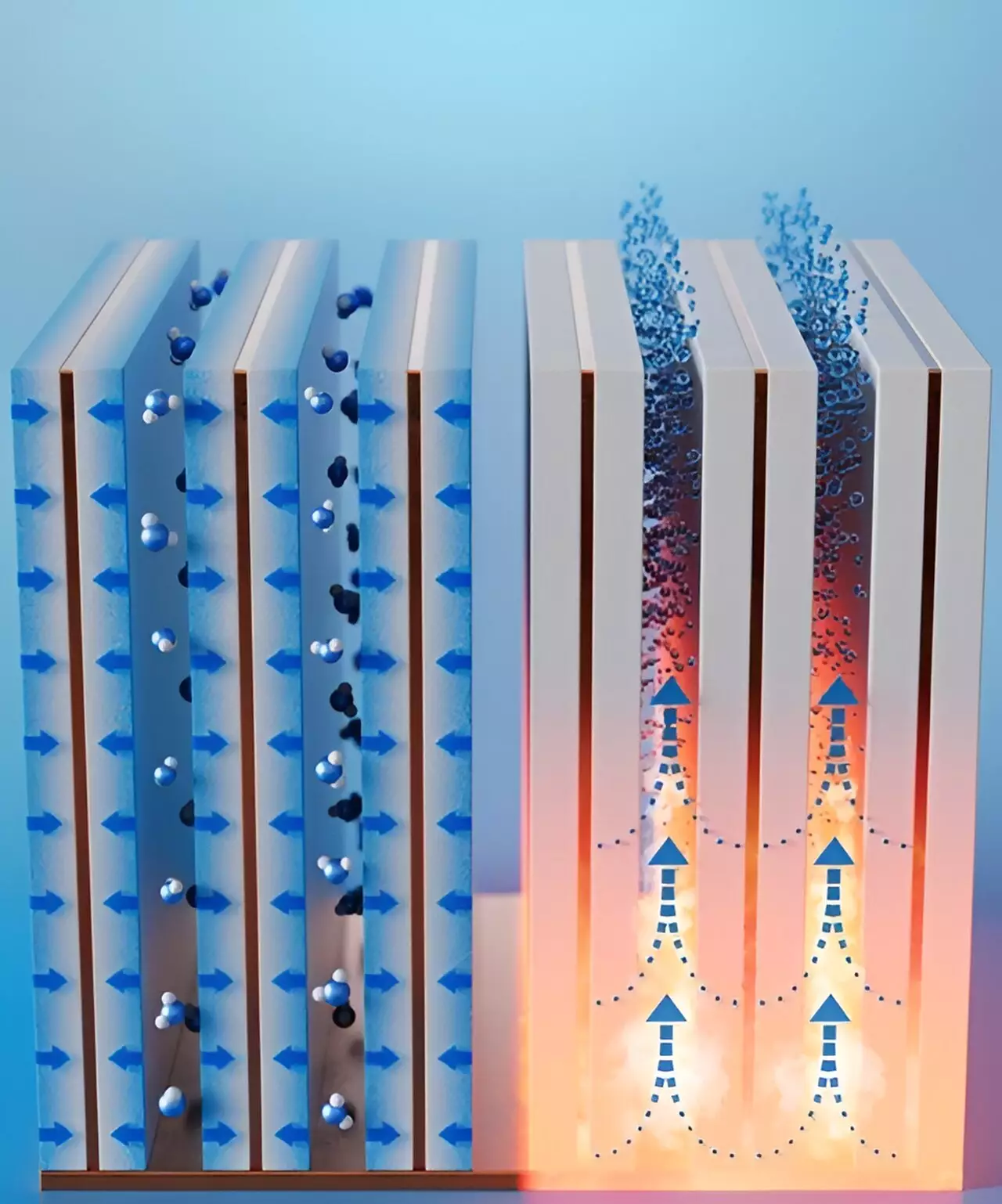In regions where water resources are scarce, access to clean and safe water is a critical issue. While local bodies of water are traditionally relied upon for water supply, even in dry regions, there exists water vapor in the air. However, the challenge lies in how to effectively harvest this water vapor to generate potable water that meets the growing demands of the population in arid locations.
Researchers have recently developed a groundbreaking device specifically designed to address this challenge. The device features absorbent-coated fins that are capable of trapping moisture from the air and then converting it into potable water when heated. This innovative prototype represents a significant step forward in providing a sustainable solution to water scarcity in arid regions. The study detailing this device has been published in ACS Energy Letters, highlighting its potential impact on water generation technology.
The team of researchers led by Xiangyu Li, Bachir El Fil, and their colleagues, conducted extensive research to design a humidity harvester that could efficiently and effectively capture water vapor from the atmosphere. The key innovation behind this device lies in the co-design of the water-adsorbent “fins,” which are sandwiched between copper foams coated with a zeolite material. Unlike previous approaches that focused solely on material development, this device emphasizes the integration of material properties with the adsorption bed design. As a result, the fins are thin, compact, and capable of rapidly harvesting water from the air.
To demonstrate the functionality of the device, the researchers constructed a prototype with 10 small adsorbent fins arranged side by side on a copper base plate. These fins are placed approximately 2 millimeters apart, an optimal distance for maximizing moisture capture from air with low humidity levels. The device was able to saturate the fins within an hour and release the trapped moisture when the base plate reached 363 Fahrenheit. Through extrapolation, the team calculated that 1 liter of absorbent coating on the fins could yield up to 1.3 liters of potable water per day in air with 30% relative humidity. This represents a substantial improvement over existing water generation devices, with a potential volume output two to five times greater.
The successful development of this innovative water generation device opens up new possibilities for addressing water scarcity in arid regions. The researchers envision integrating this technology into existing infrastructures that produce waste heat, such as buildings or transportation vehicles. By harnessing waste heat sources, the device offers a cost-effective solution for generating potable water in areas with limited access to clean water. With further refinement and development, this system has the potential to revolutionize water generation technology in arid regions, providing a sustainable and efficient means of meeting the water needs of the population.


Leave a Reply